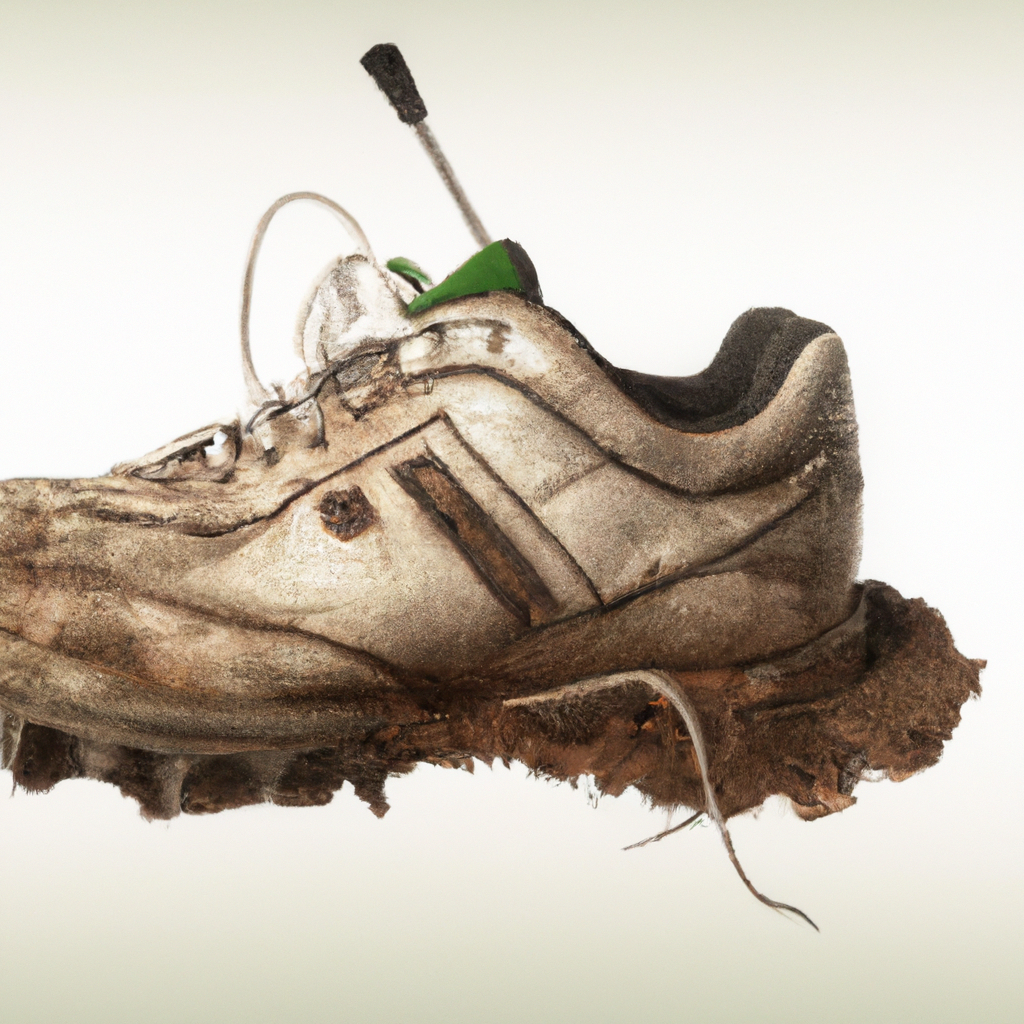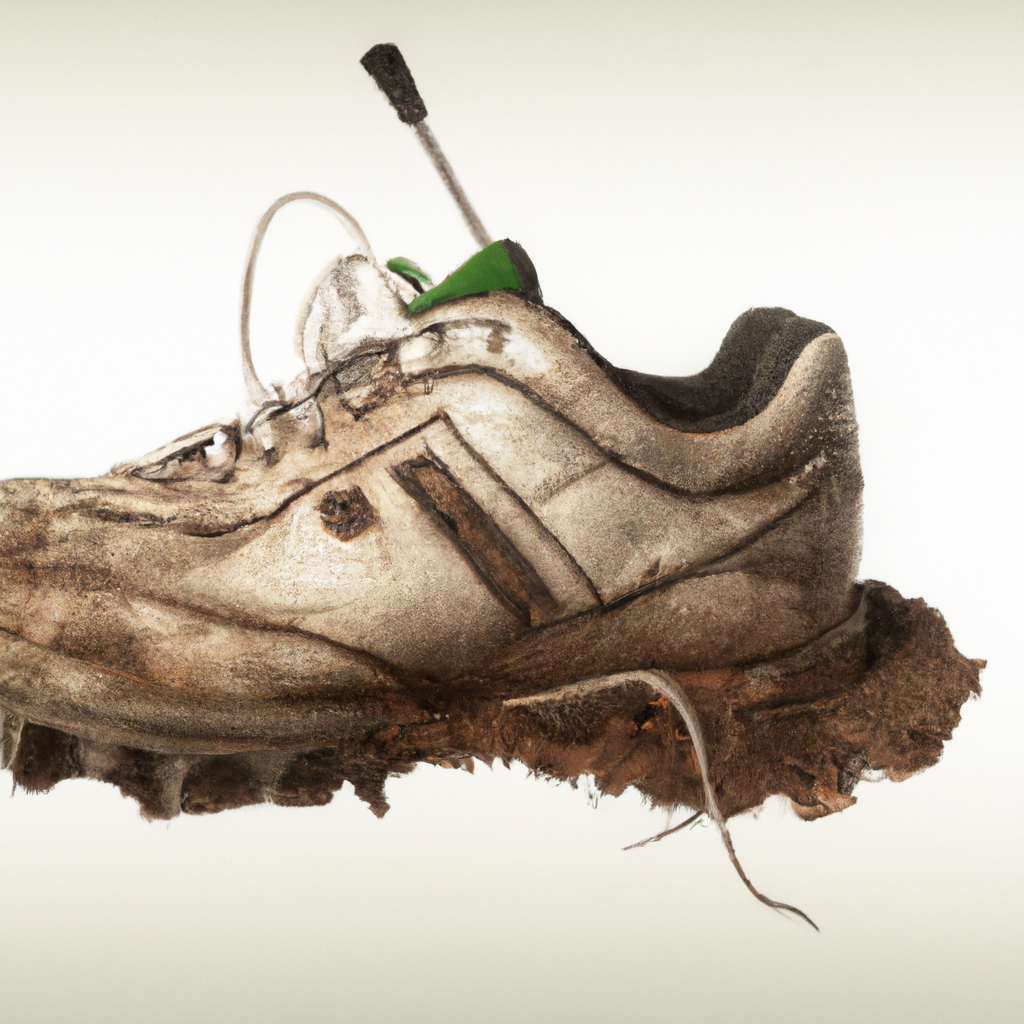We may earn money or products from the companies that may be mentioned in this post.
Ready to hit the green and swing your way to victory? Before you tee off, you may be wondering just how many miles you’ll be trekking during a round of 18 holes. Well, get your golf shoes on and prepare to be amazed! In this article, we’ll uncover the surprising distance you cover as you navigate the course, giving you a whole new appreciation for the physical endurance required to master this timeless sport. Lace up those shoes and let’s dive into the fascinating world of golfing miles!

1. Overview of Golf Courses and Distances
1.1 Types of Golf Courses
Golf courses can be categorized into various types, each offering a unique playing experience. Some common types include parkland courses, which are typically characterized by lush green fairways and tree-lined boundaries; links courses, which are situated near coastlines and feature undulating terrain and sandy soil; and desert courses, which are found in arid regions and incorporate natural desert landscapes into the course design.
1.2 Standard Golf Course Layout
A standard golf course consists of 18 holes, each varying in length and difficulty. The layout generally comprises four par-3 holes, four par-5 holes, and ten par-4 holes. Par refers to the number of strokes an average golfer is expected to take to complete each hole. The overall design of a golf course aims to provide a balanced and diverse challenge for players.
1.3 Average Distances of Holes
The average distance of each hole on a golf course can vary depending on its par value. Par-3 holes typically range from 100 to 250 yards, par-4 holes can span between 300 and 450 yards, while par-5 holes can measure anywhere from 450 to over 600 yards in length. The variation in distance allows players to utilize different clubs and employ various strategies throughout their round.
1.4 Total Distance of 18 Holes
Considering the varying distances of each hole, the total distance covered during a round of 18 holes can differ from course to course. On an average golf course, the total distance for a round typically ranges between 6,000 to 6,700 yards. However, it is important to note that championship-level courses may have longer total distances, exceeding 7,000 yards.
2. Walking vs. Riding Carts
2.1 Benefits of Walking
Walking the golf course not only provides a leisurely physical activity but also allows you to fully appreciate the natural beauty and ambiance of the surroundings. Amidst the comforting sounds of chirping birds, rustling leaves, and the occasional thwack of a well-struck golf ball, walking can enhance your overall experience on the course. Additionally, walking has numerous health benefits, such as improving cardiovascular fitness and burning calories.
2.2 Prevalence of Riding Carts
While walking the course was the traditional way of playing golf, the prevalence of riding carts has increased over recent years. Many golfers opt to use riding carts due to factors such as physical limitations, time constraints, or simply personal preference. Riding carts provide convenience and save time, allowing players to swiftly move between holes without exerting physical effort.
2.3 Factors Influencing Walking vs. Riding Decisions
Several factors influence the decision to walk or use a riding cart when playing golf. The golfer’s age, fitness level, and overall physical condition play a significant role in determining whether to walk or ride. Additionally, external factors such as weather conditions, the layout of the course, and the availability of carts also impact the decision-making process. It is essential to consider these factors and choose the option that ensures an enjoyable and comfortable round while still considering personal health and preferences.
3. Factors Affecting Distance Walked
3.1 Course Layout
The design and layout of a golf course can significantly impact the distance one walks during a round. Courses with a more compact layout, where holes are situated close together, generally require less walking. In contrast, courses with scattered hole placements or longer distances between greens and tees can result in increased walking distances.
3.2 Terrain and Elevation Changes
The topography of the golf course also affects the walking distance. Hilly or mountainous courses with significant elevation changes may require more physical exertion and thus increase the distance walked. On the other hand, flatter courses with minimal changes in elevation can minimize the walking distance.
3.3 Tee Box and Hole Locations
The placement of the tee boxes and hole locations on a golf course can influence the distance walked. Golfers who choose to play from the back tees will generally cover more ground than those opting for forward tees. Similarly, the position of the holes on the greens can result in shorter or longer distances between holes, affecting the total walking distance.
3.4 Personal Playing Style
Individual playing style and strategy also contribute to the walking distance during a round of golf. Golfers who tend to hit errant shots or frequently search for lost golf balls may end up walking extra distances throughout the course. Conversely, more accurate players who consistently hit the fairways and greens can minimize unnecessary walking by keeping the ball in play.

4. Measuring Distance Walked
4.1 GPS and Rangefinder Technology
Advancements in technology have provided golfers with tools to measure the distance walked on the course accurately. GPS devices and rangefinders equipped with distance-tracking features can provide real-time data regarding the distance covered during a round. These devices utilize satellite navigation or laser technology to calculate distances and help golfers keep track of their walking distances.
4.2 Pedometers and Fitness Trackers
Pedometers and fitness trackers offer another means of measuring distance walked on the golf course. These wearable devices use accelerometers and motion sensors to estimate steps taken and overall distance covered. While not specifically designed for golf, they can provide reasonably accurate measurements of walking distances during a round.
4.3 Manual Estimations
A simple yet effective method of estimating the distance walked during a round of golf is through manual approximations. Using a course map or visual cues, golfers can estimate the distance between holes and add up the lengths accordingly. While this method may lack precision, it can still offer a general idea of the walking distance.
5. Research and Studies on Walking Distance
5.1 Scientific Studies
Several scientific studies have been conducted to analyze the walking distances involved when playing golf. These studies utilize data collected from players of varying skill levels and course designs to provide insights into the average distances walked during a round and the factors influencing these distances.
5.2 Data from Golf Associations
Golf associations and organizations also gather data related to walking distances on golf courses. This information is derived from surveys, player feedback, and statistical analysis. By collating this data, golf associations can highlight trends and patterns in walking distances across different courses and player demographics.
5.3 Findings and Variations
Research findings and data indicate that walking distances during a round of golf can vary significantly depending on factors such as course design, individual playing style, and personal choices. On average, golfers can expect to walk between 4 to 6 miles (6.4 to 9.7 kilometers) when playing 18 holes. It is important to note that these figures are estimates, and actual walking distances may deviate based on the aforementioned factors.
6. Comparisons with Other Physical Activities
6.1 Walking Distance Comparison
When compared to other physical activities, golf generally involves moderate walking distances. Activities such as jogging or running typically cover significantly longer distances. On the other hand, sports like basketball or tennis may involve shorter distances due to the smaller playing area. Golf strikes a balance, allowing players to engage in a substantial amount of walking while still providing opportunities for skillful shot-making.
6.2 Caloric Expenditure Comparison
Walking the golf course offers a considerable caloric expenditure, albeit lower than more intense physical activities. On average, a golfer can expect to burn around 300 to 400 calories per hour. This estimation accounts for the walking, swinging, and mental focus required during a round. While it may not match the caloric burn of high-intensity workouts, golf provides a more leisurely and enjoyable exercise option.
6.3 Health Benefits
Engaging in golf and walking the course offers several health benefits. Regular physical activity, such as walking, contributes to cardiovascular fitness, improved muscle tone, and increased endurance. Additionally, the mental focus and concentration required during a round of golf can provide stress relief and promote a sense of overall well-being. Combining exercise with the enjoyment of the game makes golf a unique and holistic physical activity.
7. Strategies to Reduce Walking Distance
7.1 Improving Game Accuracy
Enhancing your game accuracy through practice and lessons can significantly impact the overall distance walked on the golf course. By consistently hitting the fairways and avoiding errant shots, you can minimize unnecessary walking and keep the ball in play. Improving shot accuracy ultimately leads to reduced walking distances and a more enjoyable golfing experience.
7.2 Efficient Course Navigation
Efficient navigation around the golf course can also help reduce walking distances. Familiarize yourself with the course layout and plan your routes between holes accordingly. Opt for the most direct paths, avoiding unnecessary detours. Taking note of landmarks or using course maps can assist in selecting optimal paths and minimizing walking distances.
7.3 Utilizing Golf Course Amenities
Many golf courses offer amenities such as ball washers, restrooms, and refreshment stations at various locations on the course. By strategically making use of these facilities, you can plan your breaks and walking routes to minimize overall distance. Taking advantage of these amenities not only helps reduce walking but also enhances your comfort and enjoyment while playing.
7.4 Utilizing Golf Course Amenities
Golf courses often provide additional amenities to assist golfers in minimizing walking distances. Electric golf carts or push carts are readily available for rent, allowing players to navigate the course with ease. By utilizing these amenities, you can strike a balance between walking and using assisted transportation, tailoring your golfing experience to your personal preferences and physical abilities.
8. Tips for a Comfortable Walking Experience
8.1 Proper Footwear
Choosing appropriate footwear is crucial for a comfortable walking experience on the golf course. Select golf shoes that provide adequate support, cushioning, and traction to minimize fatigue and prevent foot discomfort. Properly fitted shoes with breathable materials can offer additional comfort during long rounds of walking.
8.2 Carrying vs. Using a Golf Push Cart
Deciding whether to carry your golf bag or utilize a push cart is another consideration for a comfortable walking experience. Carrying a bag can be physically demanding and may result in fatigue. Alternatively, using a push cart can distribute the weight of your bag and reduce strain on your body, allowing for a more relaxed and enjoyable round.
8.3 Hydration and Snack Considerations
Staying hydrated and fueling your body with snacks is essential during a round of golf. Carry a water bottle and regularly hydrate to prevent dehydration and fatigue. Additionally, pack nutritious snacks such as energy bars or fruits to maintain energy levels throughout the round. Proper hydration and nutrition contribute to an enhanced walking experience on the golf course.
8.4 Stretching and Conditioning Exercises
Engaging in pre-round stretching and conditioning exercises can help prepare your body for walking the golf course. Focus on stretches that target the lower body, including the hips, legs, and ankles. Additionally, include exercises that improve core stability and strength, as this can assist in maintaining an upright posture and reducing fatigue while walking.
9. Professional Golfers’ Walking Distances
9.1 PGA Tour Professionals
PGA Tour professionals typically cover impressive distances during their competitive rounds of golf. Despite the availability of riding carts, many professionals choose to walk the course to enhance their focus and connection with the game. On average, PGA Tour professionals can walk between 5 to 7 miles (8 to 11 kilometers) during an 18-hole round.
9.2 LPGA Tour Professionals
LPGA Tour professionals, like their PGA counterparts, often opt to walk the course during tournaments. The average walking distance for LPGA Tour professionals ranges from 4.5 to 6 miles (7.2 to 9.7 kilometers) per 18 holes. These athletes showcase their dedication and physical prowess by engaging in substantial walking distances while competing at the highest level.
9.3 Senior Tour Professionals
Senior Tour professionals, who compete on tours such as the PGA Tour Champions, also choose to walk during their rounds. The walking distances for senior professionals are similar to those of PGA and LPGA Tour players, ranging from 5 to 7 miles (8 to 11 kilometers) during an 18-hole round. Walking remains an integral part of the game at all levels of professional golf.
10. Conclusion
10.1 Summary of Findings
In summary, the average walking distance for 18 holes of golf ranges from 4 to 7 miles (6.4 to 11 kilometers), depending on various factors such as course layout, terrain, personal playing style, and individual preferences. Research studies and data from golf associations help shed light on these distances, providing valuable insights into the physical demands of the game.
10.2 Walking vs. Riding Debate
The decision to walk or use riding carts is influenced by personal factors, physical limitations, and overall enjoyment of the game. While walking offers a range of health benefits and a closer connection to the course, riding carts provide convenience and time-saving advantages. Golfers must consider their circumstances and preferences when making the decision between walking and using a riding cart.
10.3 Personal Preferences and Considerations
Ultimately, the choice between walking or using a riding cart is a personal one. Each golfer should assess their fitness level, physical capabilities, and preferences to determine the most comfortable and enjoyable way to play. Strategies to reduce walking distances, proper footwear, and utilizing golf course amenities can further enhance the overall comfort and satisfaction of walking the golf course. By finding the right balance and considering individual needs, golfers can make the most of their time on the course and revel in the joy of playing 18 holes.
